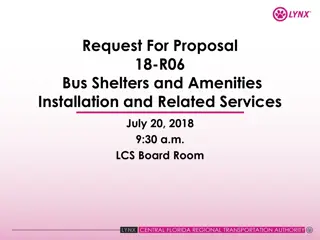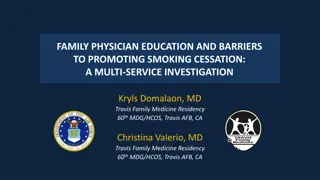
Livelihood Coping Strategies and Data Availability
Explore the concept of Livelihood Coping Strategies (LCS) used by households facing food insecurity, with a focus on indicators, data availability, strategy categorization, and analysis results. Learn about the strengths and limitations of LCS as a standard indicator for assessing food security situations.
Uploaded on | 2 Views
Download Presentation

Please find below an Image/Link to download the presentation.
The content on the website is provided AS IS for your information and personal use only. It may not be sold, licensed, or shared on other websites without obtaining consent from the author. If you encounter any issues during the download, it is possible that the publisher has removed the file from their server.
You are allowed to download the files provided on this website for personal or commercial use, subject to the condition that they are used lawfully. All files are the property of their respective owners.
The content on the website is provided AS IS for your information and personal use only. It may not be sold, licensed, or shared on other websites without obtaining consent from the author.
E N D
Presentation Transcript
LCS indicator and data availability Livelihood coping strategies are strategies that households use when they are not able to sufficiently access food and/or income to purchase food. Livelihood coping strategies indicator was developed by WFP and is typically collected by WFP, occasionally also by other partners usually included in food security surveys 2
LCS construct Master list of strategies available in WFP CARI guidance includes 18 strategies
LCS - construct Strategies can be divided into: Stress strategies Crisis strategies Emergency strategies For livelihood coping module countries/agencies are expected to select altogether 10 strategies: 4 stress, 3 crisis and 3 emergency strategies 4
LCS - construct The master list of strategies suggests severity categories for all strategies included However, countries/agencies should review the LCS module by: Selecting context-specific strategies Selecting the right severity categorization for each strategy 5
LCS - construct Recall period of 30 days Response options: Yes and exhaustion of strategy are counted as yes Not necessary and not applicable are counted as no 6
LCS - construct LCS analysis results from Lesotho in a table with share of households in different categories and a table with a breakdown of responses from Afghanistan 7
Linkages between LCS and IPC Phases Households are allocated to one of the categories based on the most severe strategy applied 8
LCS - strengths Only standard livelihood coping indicator Valuable for confirming severity of food security situation Can be analysed in detail Individual strategies Detailed analysis of response categories Can be cross-checked with e.g. data on assets (if collected)
LCS - limitations Common to encounter problems with understanding and coding of different response options Example interpretation errors: Sold female animals Sold last female animals Borrowed/relied on social networks, family or neighbours Begged Leads to compromised results of LCS.
LCS - quiz Statement T F 1. In severe protracted crisis the LCS indicator may have limited use. X 2. Even if equally affected by a shock, less vulnerable households may have higher scores because they are more capable of changing livelihood strategies and assets. LCS is globally standard and the same everywhere. X 3. X 4. rCSI and LCS are comparable and correlated. X 5. The LCS is based on a questionnaire that considers only food consumption related coping strategies. X 6. IPC cut-offs for the LCS are based on the strategies sustainability and potential negative impact on future livelihoods and food security of the household. X




